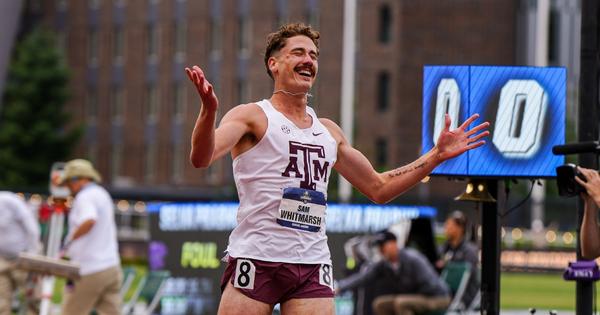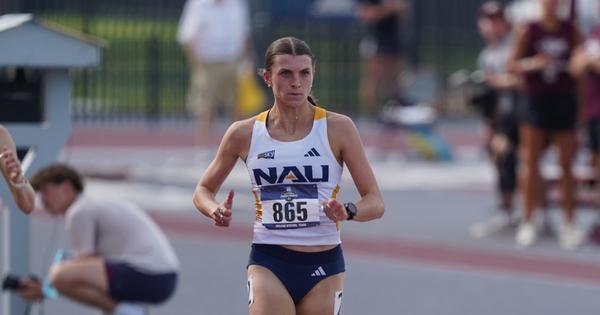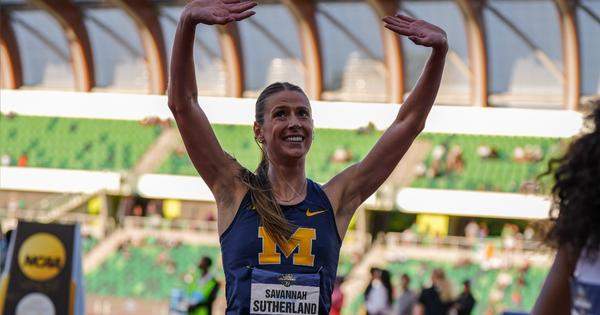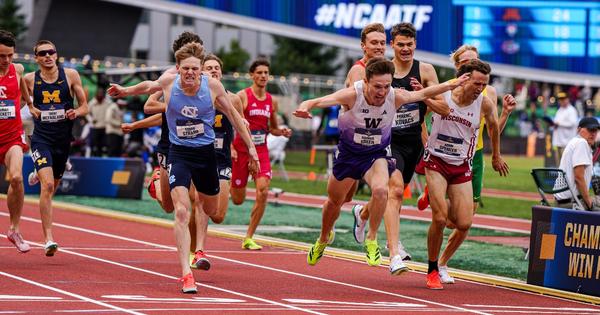By Rachel DaDamio
June 23, 2025
Middle distance and distance runners all know the feeling of anticipation when the official rings the bell to signify the final lap. The bell lap at this year’s NCAA championships had it all: Doris Lemngole asserting her dominance in the steeplechase to break the collegiate record, Sam Whitmarsh making a decisive move with 200m to go to win the 800m, and Pamela Kosgei holding off a strong field in the 5000m to complete the 5k/10k sweep.
I analyzed bell lap data from the 2025 NCAA championships for the 800m, 1500m, 3000m steeplechase, 5000m, and 10,000m.
It turns out that for most athletes, the bell lap isn’t all that dramatic. Many don’t make major moves in the final 400 meters – 30% of athletes in these events didn’t change position at all, and over half (57%) shifted just one place or fewer in either direction. These results underscore the importance of not relying solely on the final lap of a race to make huge place gains. Conversely, they also offer some comfort to athletes who like to start their kick early – if you are in a good position at the bell, there’s a strong chance you’ll hold onto it.
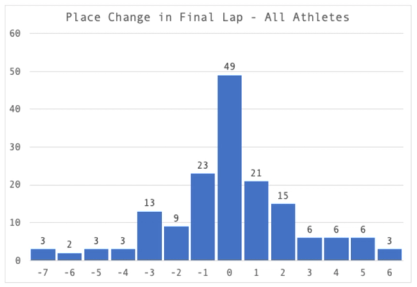
Since the biggest moves often happen at the front of the race, I also looked at only the All-American finishers (those who placed in the top 8 of their event). While All-American athletes generally skewed more positive in the final lap (i.e. more likely to pass another athlete), the broader pattern held: half of these athletes changed one place or fewer in the final lap.
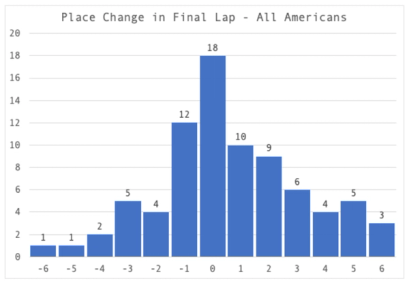
While big surges are rare, some of the most thrilling races this year were defined by dramatic final laps. For example, Ethan Strand (North Carolina) was eighth at the bell lap and finished second in the men’s 1500m. Even more impressively, he was in 12th—last place—with about 200m to go. In addition to Strand, two other athletes improved six places in the bell lap: Agnes McTighe (Northern Arizona) moved from 13th to 7th in the women’s 5000m and Rodgers Kiplimo (Iowa State) moved from 10th to 4th in the men’s 10,000m.
Among NCAA champions, Sam Whitmarsh (Texas A&M) and Roisin Willis (Stanford) made the biggest moves to win the men’s and women’s 800m titles, respectively. Whitmarsh moved from sixth at the bell lap to first, while Willis climbed from fifth. While Whitmarsh and Willis were able to make significant place improvements in the last lap, they were the exception – half of the eventual NCAA champions were already leading at the bell lap. The following Sankey diagram shows the path to first for these athletes.

For Whitmarsh and Willis, the bell lap represents a larger portion of their total race compared to longer distance events. In general, we saw more position changes in the final lap of shorter races, though the relationship was weak. For example, the men’s 10,000m saw more final-lap position changes than the men’s 800m, steeplechase, and 5k.
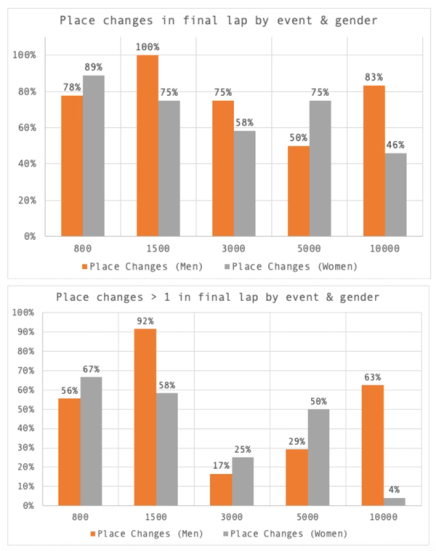
Two races in particular tell strikingly different bell lap stories: the men’s 1500m and the women’s 10,000m. In the men’s 1500m, all competitors finished within 1.5 seconds of each other, and the bell lap was filled with place changes and dramatic sprints. In fact, every athlete in the men’s 1500m changed position during the bell lap. By contrast, in the women’s 10,000m, the biggest bell lap change was just two places. Pamela Kosgei (New Mexico) took the lead with nine laps to go and never looked back, stringing out the field and setting a new meet record.

These two events underscore an important lesson in racing: there are trends, but there are no hard rules. As four-time NCAA champion Katelyn Tuohy stated while announcing the women’s 5k, you need to have lots of tools in your toolkit and be ready for anything on race day.
The full bell lap data can be found here.
___________________
Keep up with all things track and field by following us across Instagram, X, Bluesky, Threads, and YouTube. Catch the latest episodes of the CITIUS MAG Podcast on Spotify and Apple Podcasts. For more, subscribe to The Lap Count and CITIUS MAG Newsletter for the top running news delivered straight to your inbox.

Rachel DaDamio
Rachel DaDamio ran at the University of Notre Dame and moved to Chicago after graduating to work as a data scientist, where she’s also training for a fall marathon.
